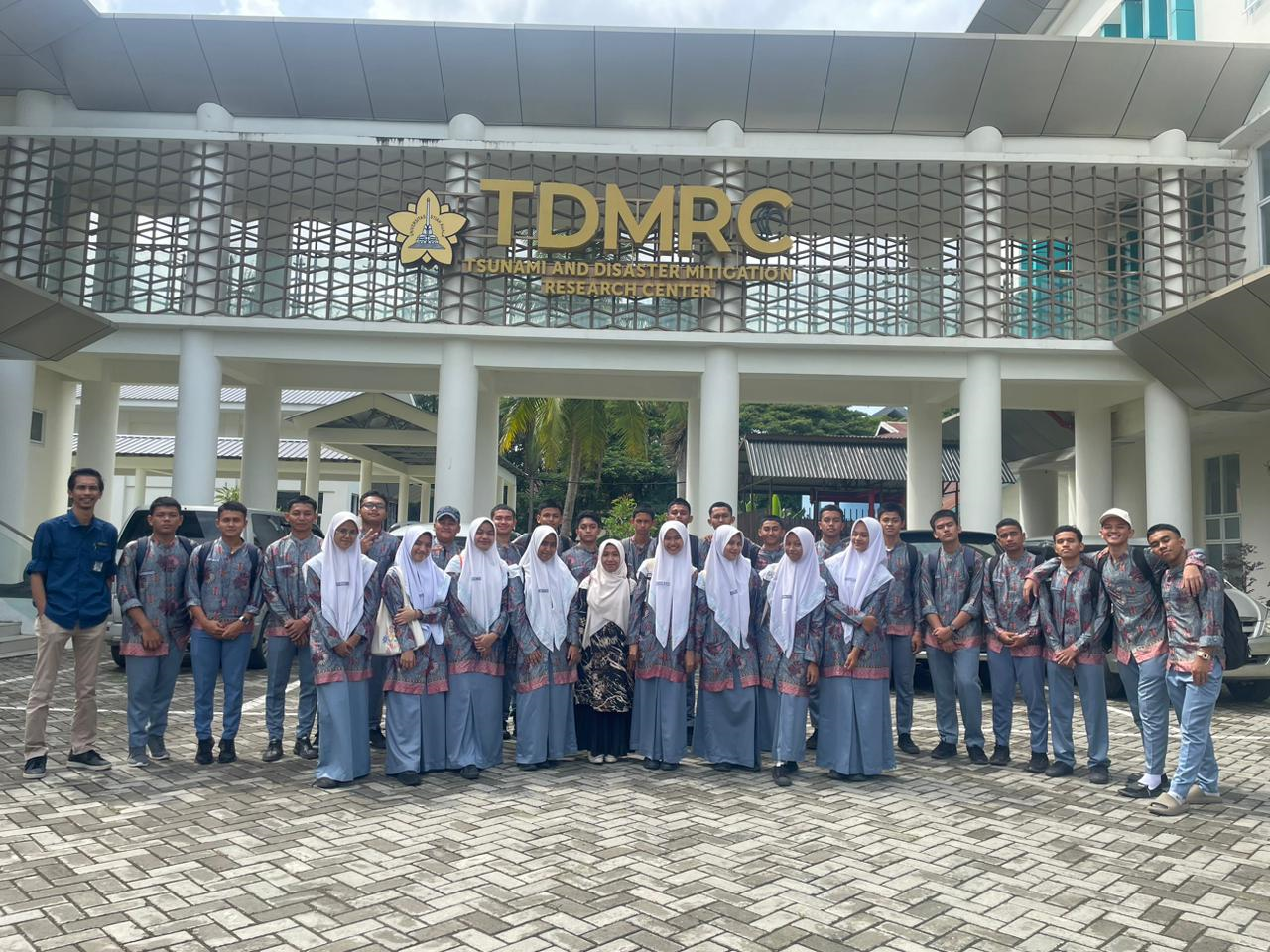 Photo with students of SMAN Modal Bangsa
Photo with students of SMAN Modal Bangsa
On Thursdays (02/11/23), a group of approximately 30 students from SMA Negeri Modal Bangsa Aceh Besar visited the Hydrometeorological Lab at TDMRC Universitas Syiah Kuala (USK). This educational excursion aimed to delve deeper into the realm of hydrometeorological and climate change research being conducted within the USK disaster mitigation center’s laboratory.
Accompanied by their teacher, Wio Pradana Putra, S.Si, this regular student initiative seeks to provide firsthand exposure to the wealth of knowledge and expertise offered by the researchers and practitioners at TDMRC USK. Mr. Wio emphasized that the fusion of practical experience and knowledge acquisition forms a pivotal combination for these young students, who are the future hope of the nation, as they prepare for their higher education journey.
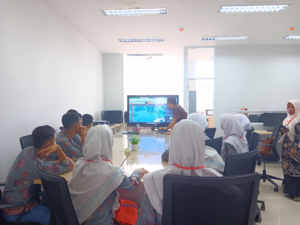
Remarks from the coordinator of the Hydrometeorology Division and explanation of studies in the Hydrometeorology Division
The group arrived at approximately 09:30 (WIB) at the TDMRC building. Their visit was warmly received by Dr. Saumi Syahreza, M.Si, the Head of the Hydrometeorology and Climate Change Division, along with several students engaged in internships and their final assignments at the Hydrometeorological Division. During his address, Dr. Saumi highlighted the extensive range of hydrometeorological threat studies being conducted on their premises. These studies encompass flood monitoring, flash floods, landslides, and forest and land fires. Typically, the monitoring activities are carried out using satellite and drone technology. Furthermore, several of the research findings have already been effectively utilized by both local and national government authorities.
These research endeavors serve to provide valuable insights to stakeholders regarding potential disaster risks and hazards in specific regions. Additionally, they contribute to enhancing public understanding and awareness of these dangers, along with the strategies for adaptation and mitigation that should be implemented to respond to these threats.
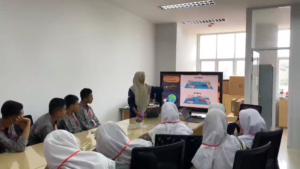
Explanation about LNINO by Rani
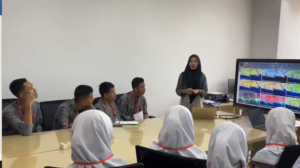
Explanation of land use change and abrasion/coastal creep by Pialisa
In addition to Dr. Saumi, other speakers, Rani and Pialisa, two female students from the Faculty of Marine Science and Fisheries at Universitas Syiah Kuala, who are currently participating in the Independent Learning Campus (Kampus Merdeka) internship program at the Hydrometeorology Lab, shed light on the causes of prolonged drought in Indonesia and Aceh Province, which began in February 2023 and continues to this day. Rani emphasized that El Niño and the Indian Ocean Dipole (IOD) are the contributing factors behind this extended dry spell. Furthermore, Pialisa elucidated the methods for monitoring changes in land cover and identifying coastal areas experiencing erosion and accretion.
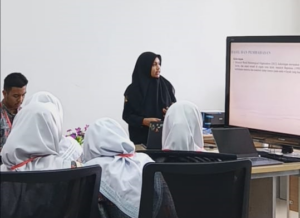
Explanation of the drought by Adila
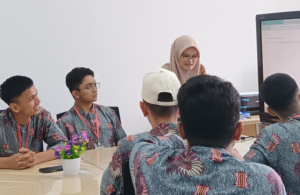
Explanation of rainfall data validation by Nini
Furthermore, Adila and Nini, two Physics students from the Faculty of Mathematics and Natural Sciences (FMIPA) working on their final assignments at the Hydrometeorology Lab, provided insights into monitoring drought in a region using the Standardized Precipitation Index (SPI) method. Nini, on the other hand, elaborated on the benefits of satellite rainfall data and how to validate it. The explanations from these four speakers were easily comprehensible for the students from SMA Negeri Modal Bangsa, as all the research findings were presented visually. The students exhibited great enthusiasm as they followed each topic, particularly when various visual images resulting from the research were displayed.
“Thanks to TDMRC USK for warmly welcoming our visit. From this visit, many of our students were inspired by the significance of understanding hydrometeorological hazards and climate change,” stated Mrs. Irnalita, S.Pd, another accompanying teacher from SMA Negeri Modal Bangsa.
After visiting the hydrometeorology laboratory, students were invited to visit the earthquake observation laboratory which is one of the real-time and offline earthquake monitoring facilities. They were welcomed by geohazards mitigation laboratory researchers. The researchers explained how seismic equipment records earthquake events and then the data is further analyzed. The purpose of the earthquake analysis is to map earthquake sources and fault lines.
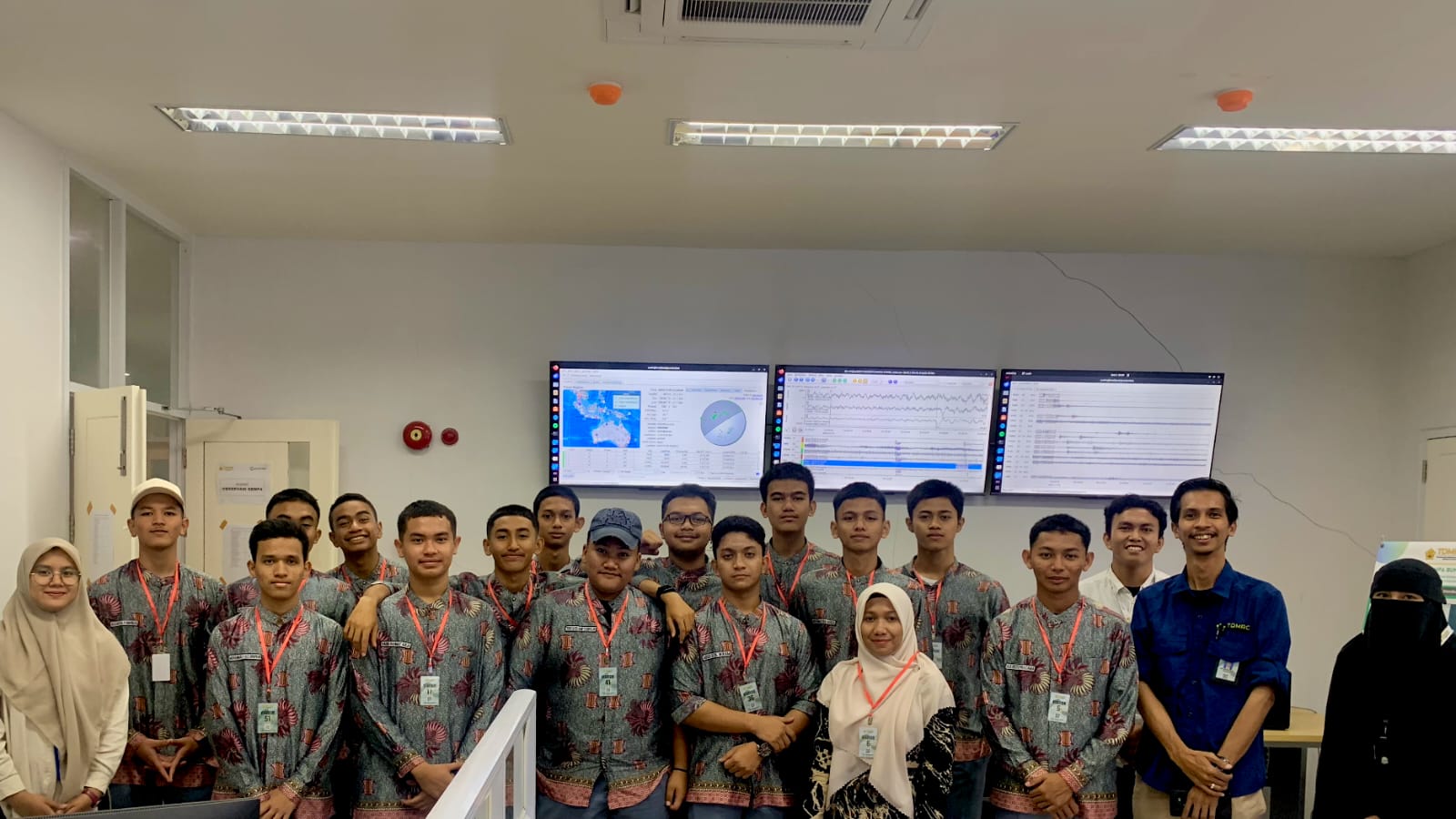
SMA Negeri Modal Bangsa students visit the TDMRC Earthquake Observation Laboratory facility


